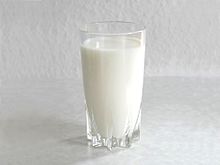A liquid diet is a diet that mostly consists of liquids, or soft foods that melt at room temperature (such as ice cream). A liquid diet usually helps provide sufficient hydration, helps maintain electrolyte balance, and is often prescribed for people when solid food diets are not recommended, such as for people who suffer with gastrointestinal illness or damage, or before or after certain types of medical tests or surgeries involving the mouth or the digestive tract.[1]
A liquid diet is not recommended outside of hospital or medical supervision. Negative side effects include fatigue, nausea, dizziness, hair loss and dry skin which are said to disappear when the person resumes eating.[2]
Clear liquid diet
A clear liquid diet, sometimes called a surgical liquid diet because of its perioperative uses, consists of a diet containing exclusively transparent liquid foods that do not contain any solid particulates. This includes vegetable broth, bouillon (excepting any particulate dregs), clear fruit juices such as filtered apple juice, clear fruit ices or popsicles, clear gelatin desserts, and certain carbonated drinks such as ginger-ale and seltzer water. It excludes all drinks containing milk, but may accept tea or coffee. Typically, this diet contains about 500 calories per day, which is too little food energy for long-term use.[3]
Full liquid diet
A full or strained liquid diet consists of both clear and opaque liquid foods with a smooth consistency. People who follow this diet may also take liquid vitamin supplements. Some individuals who are told to follow a full-liquid diet are additionally permitted certain components of a mechanical soft diet, such as strained meats, sour cream, cottage cheese, ricotta, yogurt, mashed vegetables or fruits, etc.[1]
See also
References
- ^ a b "Diet - full liquid: MedlinePlus Medical Encyclopedia". www.nlm.nih.gov.
- ^ Kane, June Kozak. (1990). Coping With Diet Fads. New York: The Rosen Publishing Group. pp. 64-65
- ^ White, Lois; Duncan, Gena; Baumle, Wendy (2010-01-27). Foundations of Basic Nursing. Cengage Learning. pp. 395–396. ISBN 1428317740.
